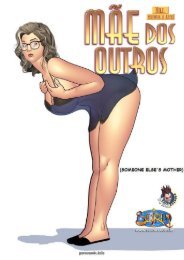AmericanCinematographer201201
Create successful ePaper yourself
Turn your PDF publications into a flip-book with our unique Google optimized e-Paper software.
Top, left and right:
Shooting at 1,000
fps while fans
billowed
Mambetova’s
clothing and hair,
Romano gelled his
lights red before
deciding to do a
second take
without the gels
and apply the
color in post.
Bottom: String
Theory is the latest
fashion-focused
film from director
Zach Gold, this one
inspired by A.F.
Vandervorst’s 2010
collection.
sides were actual mirrors. The top and the
other three sides were panes of two-way
glass. Romano pointed his camera through
one of the two-way mirrors and lit the box
through the other two-way mirrors with a
5K Fresnel.
Romano shot the box at a T1.6, but
it was still difficult to get enough light. "The
Phantom HD Gold is rated at 250 ASA,
which I estimate to be less, and each pane
of two-way glass blocked as much as 1½
stops of light from both the lens and the
lamps," he says. "Further complicating
matters, hot lamps can have an adverse
effect on butterflies, so I didn’t shoot above
30 fps. On the tighter shots, we removed
the top glass, moved the light in a bit closer
and were able to shoot at 200 fps.
“If we’d shot it on the [Phantom]
Flex, we would have had 2½ more stops of
light sensitivity,” he reflects. “I could also
get a lot more light [without heat] from
some of the newer LED lights we have
today.
“Doing a lot of bug photography,
I’ve learned there are things you can do to
get bugs to move, but heat will make them
stop,” he continues. “We had to turn the
lights off, cool them down and keep the top
of the box off for a while. Once the butterflies
get over it, you put the top back on,
crank the lights up and shoot. No butterflies
were harmed in the making of this picture,
16 January 2012 American Cinematographer













